By Brooks Paternotte
Salmo Salar on the St. Paul’s
[dropcap]T[/dropcap]he first time I was invited to fish the St. Paul’s River on Quebec’s famous North Shore I probably could not have told you much of anything about fishing for Atlantic salmon other than they pull hard and can be maddeningly difficult to catch.
Now having returned from my seventh year on this hidden gem of a sport fishery, I may be able to claim some knowledge of how to raise, hook, and catch this most elusive of game fish, yet the sport-of-kings-fish-of-a-thousand-casts still confounds, disappoints, and thrills without fail.
Preparing for my first trip, I consulted with my close friend and fishing mentor, Capt. Andrew Derr, who was splitting time between a retail gig as GM at the only, but famous, fly shop in Manhattan (Urban Angler) and figuring out the striper water surrounding the five Burroughs of New York and the north and south fork of eastern Long Island, New York, as well as Montauk, New York. He dutifully listened to my needs and quickly had a bunch of hair-dressed doubles on my doorstep in time for my charter to Fredericton, New Brunswick, and, hopefully, Blanc Sablon, Quebec. From there it was just a reliable hop from the coast inland aboard a vintage Beaver airplane. That first year we did in fact reach camp as planned on Sunday for the changeover, but that was an exception as I would learn in later years.
I now know that flying anywhere around the coast of Canada and Alaska during prime fishing weeks is at best unpredictable and at worst terrifying (like the time I thought our pilots were ditching the King Air only to realize they were just using an alternative, and shorter/unpaved/hilly runway). However, arriving safely at camp mitigates all travel woes, especially once you have rigged gear, stocked your working fly box, and consulted with the beat assignments.
On the St Paul’s, there are only two camps as the river stretches from the Belle Isle Straights (a narrow and dangerous passage on the St Lawrence Seaway) to its headwaters along the Quebec and Labrador, Canada boarders.
Conservation pays off
The primary camp, where I have had the privilege of fishing, is called the St. Paul’s River Salmon Fishing Club. While sounding wildly exclusive and fancy, the club is a no frills, owner-operation, with exclusive fishing rights to miles of pristine salmon river. Over the last several decades, the anglers and owners of the club have worked tirelessly to preserve and even enhance the fishing on this river; nearly twenty years of live release fishing, strict daily limits, and poaching enforcement have allowed for numbers not only to have stabilized, but actually increase significantly.
Before launching into tales of shredded reels, broken rods and epic fish, I should mention, humbly, my company. As much as it is a privilege to fish for these special fish on this unique river, I must admit now in my middle age, that it is just as much about the people. On my first few trips, I was very much one of the new guys brought as a guest of the old guard – consisting of three men with well over a century of salmon fishing experience among them. I quickly learned the rules and expectations of the river and it’s anglers. Always be in for lunch and cocktails punctually, unless you have a risen or hooked a fish. Only fish your assigned pool, unless invited by another to fish his pool. Keep track of fish spotted, risen, hooked, and landed and adhere to the strict limit of 40 fish per day for the camp (usually there are ten rods fishing the camp’s waters). And make sure to indicate whether or not the fish caught was a grilse (a smallish Atlantic salmon on its first return from the sea to fresh waters) or adult salmon.
I also learned that drunks and whiners were not tolerated or at least not invited back
That is not to say that my fellow anglers did not enjoy appropriate amounts of sherry at lunch and the peatiest of single malts at night. Personally, I cracked a Labatts and listened to the stories roll off these old gents’ tongues. I learned more about fishing for atlantics by hearing these guys regale themselves of the same old tales around the dinner table and fireplace than I did in seven years of beating the water with a salty guide. Guides with names like Edy, Rod, and Wade…..seriously. Most of them are related and have grown up guiding for the camp and getting to know its clients over generations. To give you an idea, the most senior guide turned 70 this year and his son and nephew are also guides. his nephew ties the most amazing flies for the river – He quickly told me that the box of fancy flies provided by my good friend, Capt. Andrew Derr, we’re more like a “box of anchors.” After being admonished for my huge flies, Maurice, Wade’s nephew, gladly sold me a dozen more appropriately sized patterns which he had tied. I was and still am a neophyte when it comes to traditional salmon flies. You have hair dressed and feather dressed, wet and dry, bugs, and more. Specific rivers, weeks, conditions, and guides will all help to confuse things in terms of pattern and size selections, but the fact remains that if the fish are there and willing, virtually any fly can be made to work.
Regardless, Maurice keeps me well stocked with Undertakers, Same Thing Murray’s, Blue Charms, Green Machines, Black Bear Green Butts, Rusty Rats, Cossabooms, and any number of tried and true original patterns. Some of us have been known to return bare hooks to him for “refunds” after they have been stripped fighting fish after fish.
Naturally, the exceptionally talented guide and tier reminds you of missed fish, poor casting, and lousy fighting and landing skills. And Maurice was generally easy on me. The camp’s head guide and current ownership partner, Eldon, is not afraid to dish it out, especially when you mess up, reminding me of salt water guides from Nantucket to the Yucatan. He smokes like a chimney and finds big fish. When fishing with him this summer, as all guests get to fish with each of the guides during the course of a normal week, I had a most illustrative experience with his persona.
This summers conditions were not great: low, warm water before we arrived, followed by rains and a cold snap. If you have tried to time fishing for these creatures, you can understand and empathize. While there were some fish in the river this summer when we arrived, they had the chance to spread out across vast expanses of flooded river increasing the challenge not only of finding a fish,but also of actually landing one.
For seven years I had never been skunked, and that is saying a lot when it comes to fishing for atlantics. I had heard tales of fish-less weeks for whole groups and could not fathom the despair, and it was already the afternoon before Eldon and I got any action. As is the custom, I met Eldon at our sixteen foot canoe equipped with a 12-hp motor around 2-pm following lunch and a mandatory nap. We headed upstream as fast as our canoe would allow and after a twenty minute ride hopped out onto a hidden bar in the vast expanse of swollen river. As Eldon and I exchanged ritual insults and instructions, he anchored the canoe and asked whether he was in the way of my cast. It was blowing about 25-knots. I was standing in four feet of rapidly moving current looking for a needle in a haystack. While Eldon berated my casting abilities and I tried to fire back with my best, I had remembered to abide by one of the most important principles of fishing for Atlantic salmon, keep your fly in the water as much as possible. Fortunately, as my sized 12 Undertaker fluttered downstream and Eldon and I jabbered like an old married couple, a fish happened upon my fly. Most importantly, I did not jerk the rod up and pull the fly from the fish’s mouth in spite of the surprise. I simply let the fish turn and run. After a quick word to Eldon, I raised the rod and felt the full weight of the fish as it ran back towards the ocean.
So that’s the annoying things about this fishing. You make a thousand beautiful cats in high winds freezing your ass off, then bam, dangling your line in the water like a dope eating a rib sitting on the poling platform and you got a fish. I landed that one.
It was about fifteen pounds and ripped off several hundred feet of line and backing before succumbing to my drag. It was a nice salmon for the river and on the high end of size scale which runs from 5-pound grilse to 25-pound trophies. Shortly thereafter, I managed to rise another fish of equal size.
Through research, reading, and listening, I have learned that each salmon river possesses a unique set of qualities which determine how it’s fish will respond to conditions, angling, etc. on the st Paul’s river, the fish have an habit of rising for a fly before taking it, sometimes coming back for it numerous times. As a result, the river’s anglers and guides have devised painstaking practices for giving such fish every opportunity to take our flies. I have had fish come up a dozen times before finally committing to a fight. Often it is a matter of adjusting the angle of your fly’s drift by a step or the distance of your cast by a “cork length”. I have changed flies to entice a strike from a rising fish and even found success with traditional trout patterns such as large Wulffs and Royal coachmen.
When Eldon and I connected with that first fish, it was just the start. Since the river is generally waded, you rarely resort to following a fish in the boat. In most instances you simply must fight the fish where you are and get it to the net. Your advantages are the nine foot shock absorber in your hand, the mechanical drag of your reel, and experience; the fish’s are a downhill ride with the current and every rock and stick along the way. Game on.
For the gear heads reading, I fish Scott rods as do the majority of our group, generally stiffer models with fighting butts like the X2S or the S4. You can call the folks in Telluride, Colorado to verify, but I believe I have sent at least three rods back after shattering them while putting the heat on these fish. (ok, once I was trying to tail a grilse all by myself, it shot through my legs, and snapped a seven weight in half; After Edy got the net from the canoe and quit laughing at me, we landed the fish). I use large arbor reels with a serious drag but have regularly sent them back for repairs after this trip. I have since upgraded from a cork and synthetic to a sealed system now, although I do fish one traditionally designed salmon reel simply because it is a fantastic reel for these fish and it sounds really cool when a fish runs on it. We generally use hand tied leaders from the good folks at Doak’s along the Miramichi; they use Maxima line to construct their leaders, and their blood knots are both effective and beautifully tied. I prefer 8-pound test, 9-foot leaders and Maxima Chameleon tippet due to the river’s high tannin content. Some guys will fish down to 6-pound test, but having confidence in your rig gets the fish in more quickly and released less stressed, in my opinion.
Hold on tight for the numbers. I once wrote up this trip for a local shop where I regularly return broken gear. When I asked the owner, a friend, why he wouldn’t post it, he said because it was all bullshit. No one can catch six salmon a day. No group lands 200 fish in a week. Not wading, not with dry flies, not . . .
While this year was off due to the high water and few fish in the river during our week, we still landed around 100 fish with seven rods for five and a half days of fishing (we did not get into camp until Monday morning due to weather and left Saturday afternoon to avoid hazardous flying conditions on the coast). We averaged about 30 percent “big fish” or salmon in their second run up the river. Personally, I did well owing simply to my persistence. Like I said before, keep the fly in the water as much as possible. I also suggest clinging to a positive attitude and reminding yourself that you have come all this way, endured clouds of bloodsucking black flies, treacherous flights and wading, all to catch a fish that is not supposed to eat for nine months with something’s that is not food and then let it go – deep breaths.
I have lied about all kinds of stuff over the last four decades, but not about fishing, it is too important. If you don’t believe me about this river, check the club’s website (see below). They also post the stats (see below) from the last twenty plus years, which shows how proper stewardship can work to benefit both angler and community. The club is now owned by the head guide, the manager, and their spouses, Eldon, Darcy, Wanda, and Sheri; along with three other guides, they run the whole camp from the last week in June until the last week of August. I’ll let you figure out who does what! While they are often fully booked for the season by November, please inquire about rod availability throughout the year.
[information]
The St. Paul’s River headwaters stretch from the Quebec/Labrador boarder to the Strait of Belle Isle, a waterway in eastern Canada that separates the Labrador Peninsula from the island of Newfoundland, in the province of Newfoundland and Labrador.
The strait is approximately 77 miles long and ranges from a maximum width of 37 miles to just 11 miles.
Navigation in the strait can be extremely hazardous with strong tidal currents interacting with the Labrador Current. Sea ice for 8–10 months of the year, and variable weather conditions including gales and fog.
Salmon fly sources:
saltwaterflytyers.com/
www.wwdoak.com/
Guide and exceptional tyer referenced above: mauricekeats@yahoo.ca (copy and paste)
Hotel in Deer Lake (commercial flights land here from Montreal and Halifax and you can connect to Blanc Sablon on the north shore from here or charter with Ron across the Belle Isle Straits and onto camp): www.deerlakemotel.com/
Club website: www.stpaulsclub.com/location.html
Club catch and release records: www.stpaulsclub.com/catch.html
Charter Air Service (pilot and owner): strait-air.com/en/
Local accommodations (Always order cod and a Labatt’s Blue for dinner) on North Shore: www.northernlightinn.com/home/
[/information]


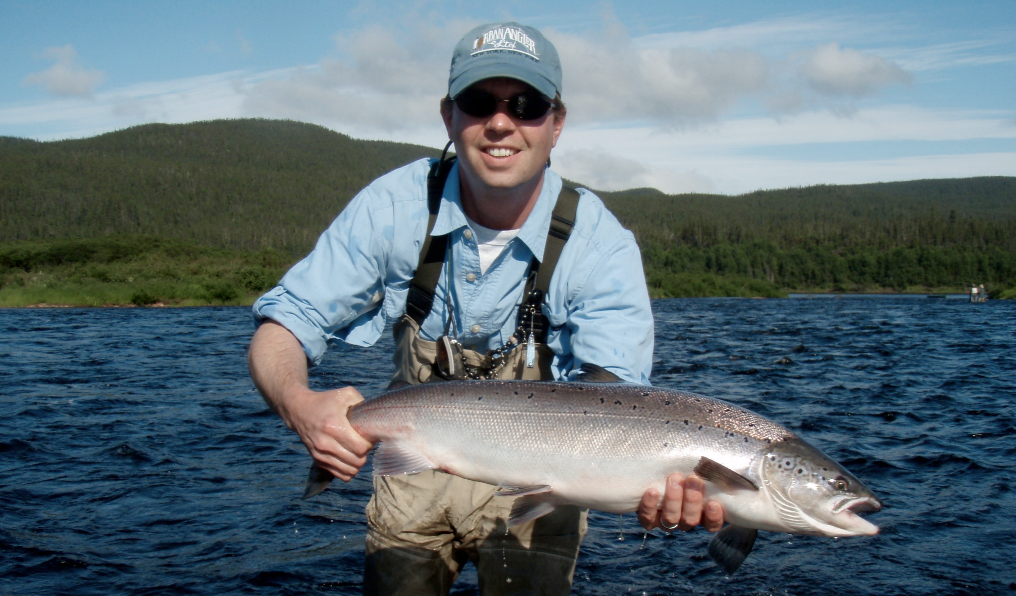
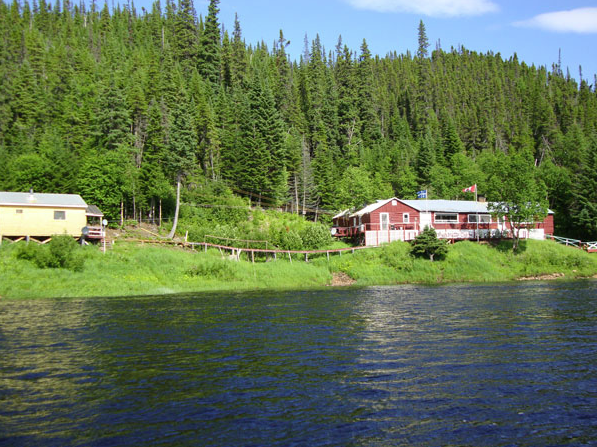
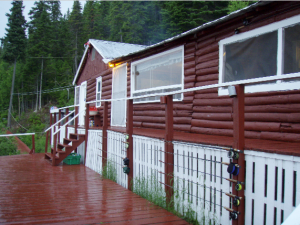
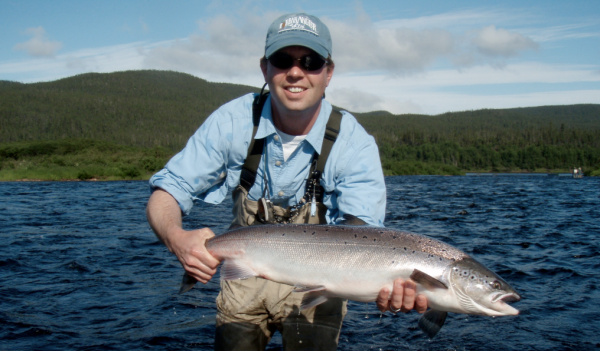
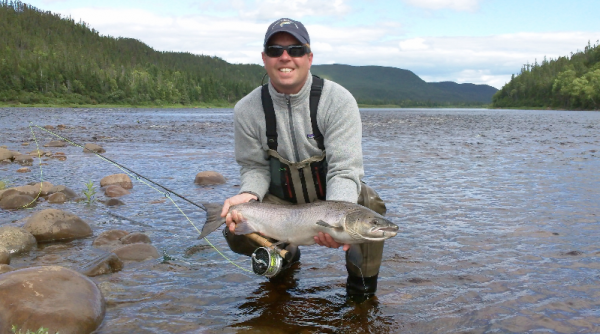
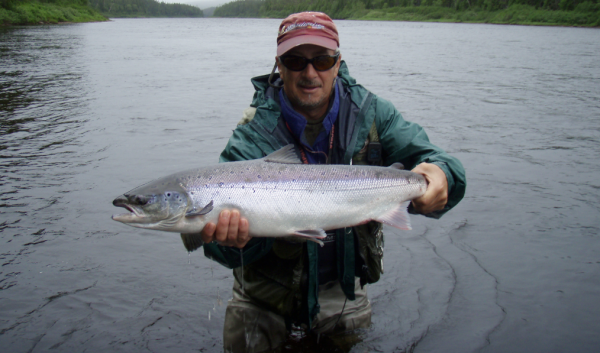
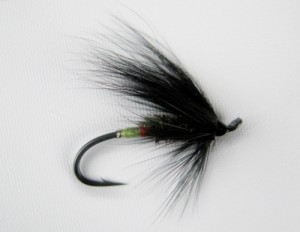
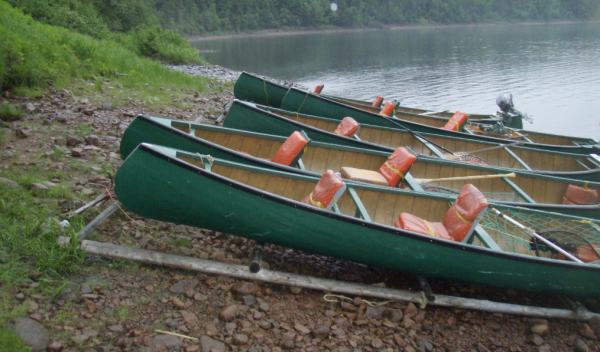
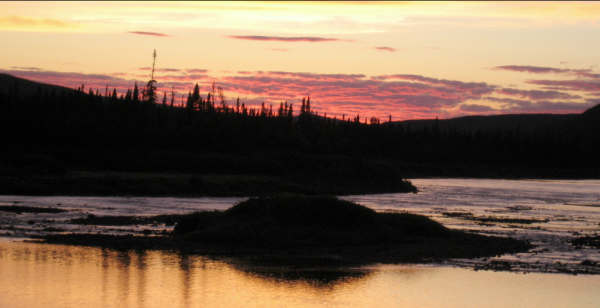





Wow that sounds awesome. I have got to get up there and try that. One thing, catching a large fish while eating a rib and sitting on a poling platform takes skill, commitment and determination. Just saying.